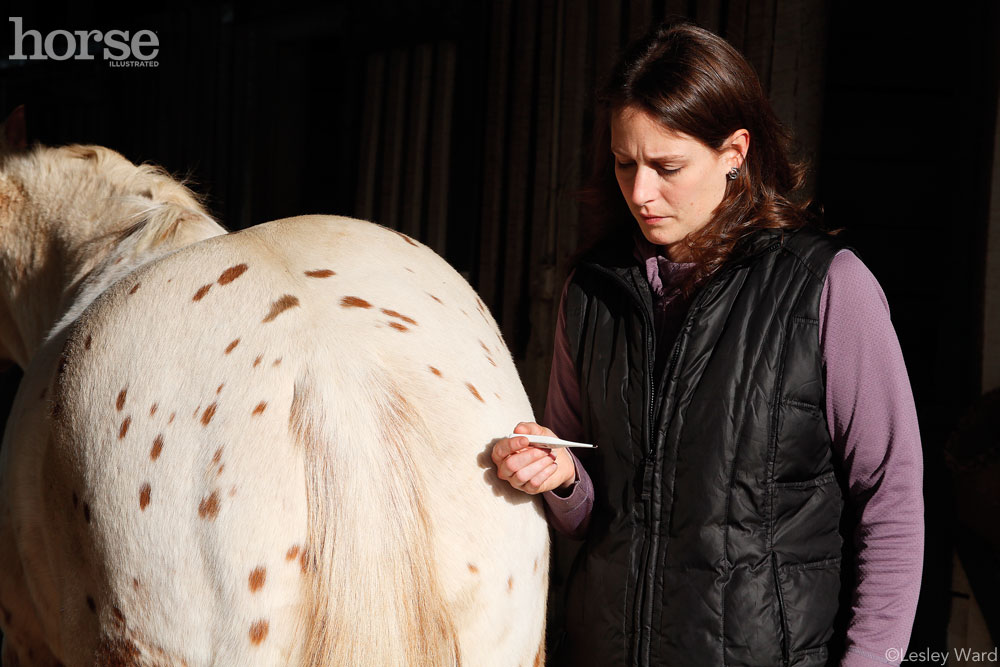Q:
I went to the barn recently only to find my horse seemed depressed and uninterested in his dinner. Because I was concerned about colic, I immediately called the vet. It turned out he had a fever. Was there anything else I should have done before the vet got there?
A:

An elevated core temperature is usually accompanied by elevated respiratory and heart rates, along with lack of interest in food or drink. A horse overheated from exercise may have a rectal temperature in excess of 103 degrees Fahrenheit, but this should go back to near normal within 30 minutes; otherwise, the horse needs prompt medical attention.
A horse overheated from exercise may have a temperature in excess of 103 degrees, but this should go back to near normal within 30 minutes; otherwise, the horse needs prompt medical attention.
A horse develops a fever because of a change in the set point in his internal thermostat. Possible situations that induce a fever include:
- viral or bacterial infections,
- an infected wound and/or cellulitis,
- heat stress,
- adverse reactions to medications, insects or other environmental allergens.
A fever is a good reason to call your veterinarian because of the possibility of a systemic disease that could worsen without medical attention. In the meantime, a few simple techniques can make your horse more comfortable. Move him to a shady and well-ventilated area. Remove blankets or sheets that might trap heat unless inclement weather or winter conditions could cause him to chill.
A fever above 104 degrees Fahrenheit needs to be cooled even before your vet arrives. Usually, your horse will be fine for the short term with this kind of fever, but you can help him with evaporative cooling methods: Soak his neck and chest with cool (not cold) water, repeating and scraping off until his chest skin feels cool to the touch. It’s best to soak only the areas in front of his shoulders; water over his entire body could cause him to chill too rapidly.
To monitor how well heat is being pulled from his body, check his rectal temperature every 10 to 15 minutes; a couple degrees of decrease in core temperature will improve his comfort until medical help arrives. Then your vet will examine your horse carefully to figure out what may be wrong and treat appropriately using non-steroidal anti-inflammatory medications and/or antibiotics as needed.
This article originally appeared in the November 2015 issue of Horse Illustrated magazine. Click here to subscribe!






